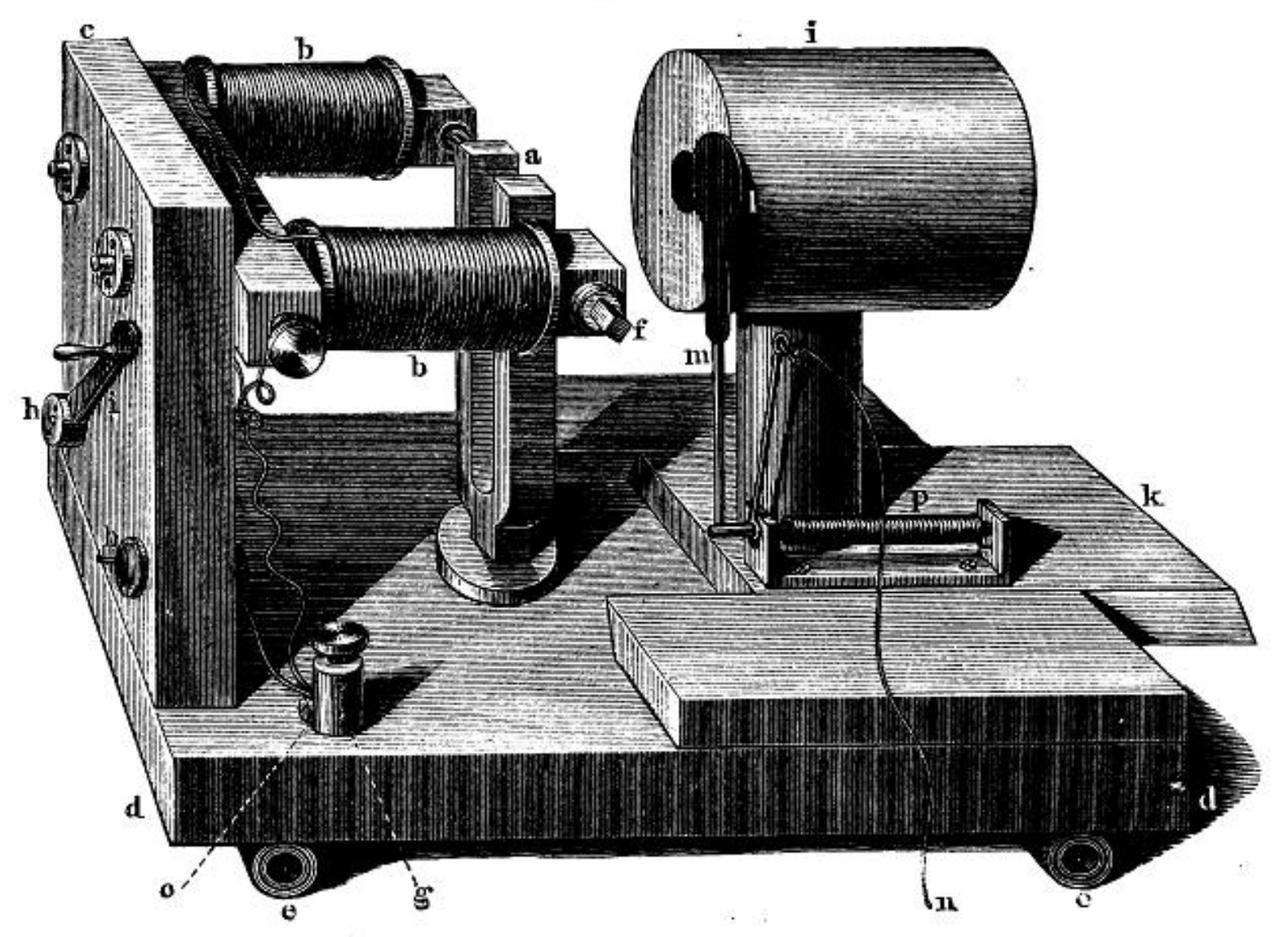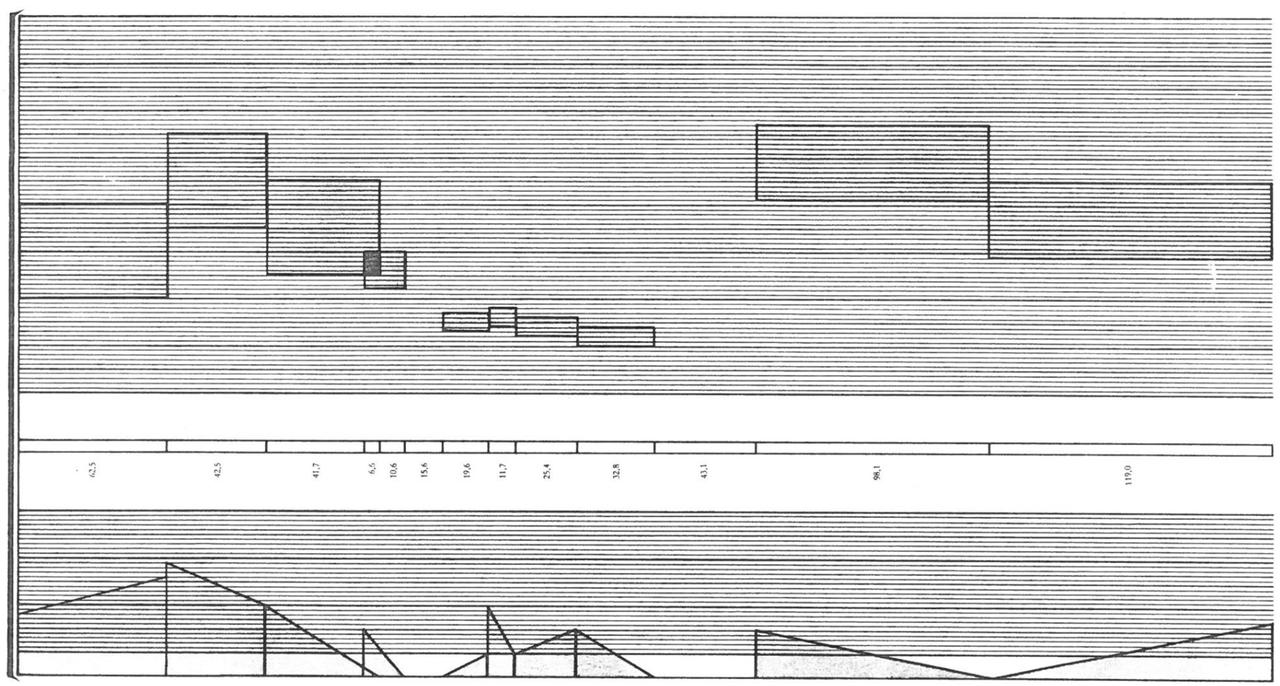Additive & Spectral: History
Early Mechanical
Early use of the Fourier representation, respectively additive synthesis, for modeling musical sounds has been made by Hermann von Helmholtz. He built mechanical devices, based on tuning forks, resonant tubes and electromagnetic excitation for additive synthesis. Von Helmholtz used these devices for investigating various aspects of harmonic sounds, including spectral distribution and relative phases.

Tuning forks with resonant tubes (von Helmholtz, 1870, p.183).
Early Analog
The history of Elektronische Musik started with additive synthesis. In his composition Studie II, Karlheinz Stockhausen composed timbres by superimposing sinusoidal components. In that era this was realized through single sine wave oscillators, tuned to the desired frequency and recorded on tape.
Studie II is the attempt to fully compose music on a timbral level in a rigid score. Stockhausen therefor generated tables with frequencies and mixed tones for creating source material. Fig.1 shows an excerpt from the timeline, which was used to arrange the material. The timbres are recognizable through their vertical position in the upper system, whereas the lower system represents articulation, respectively fades and amplitudes.

Fig.1: From the score of Studie II.
Early Digital
Max Mathews
As mentioned in the Introduction, Max Mathews used additive synthesis to generate the first digitally synthesized pieces of music in the 1950s. In the early 1960s, Mathews had advanced the method to synthesize dynamic timbres, as in Bycicle Built for Two:
Iannis Xenakis
In his Electroacoustic compositions, Iannis Xenakis made use of the UPIC system for additive synthesis (Di Scipio, 1998), as for example in his Mycenae-Alpha (1977).
Follow this link for more information on the UPIC system (and many more instruments) 120 Years.
References
1998
- Agostino Di Scipio.
Compositional models in xenakis's electroacoustic music.
Perspectives of New Music, pages 201–243, 1998.
[details] [BibTeX▼]
